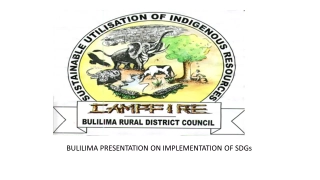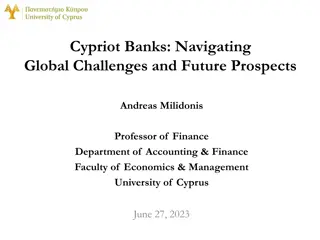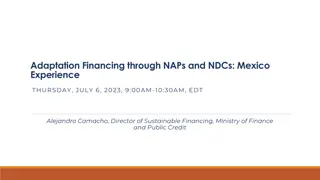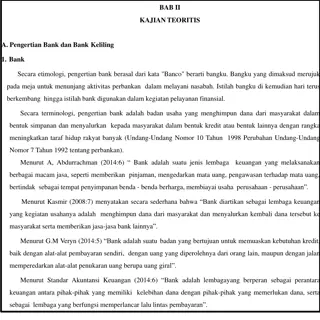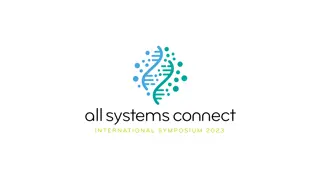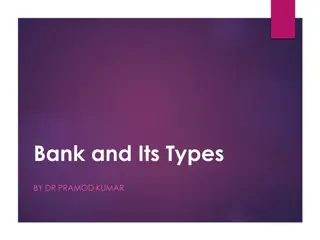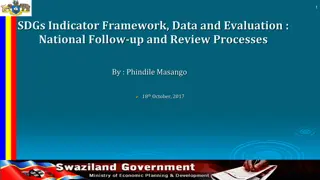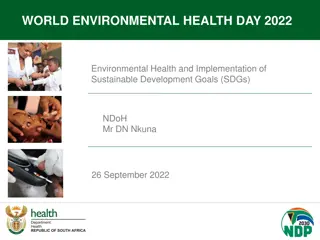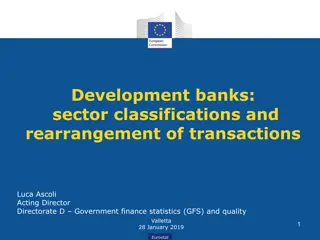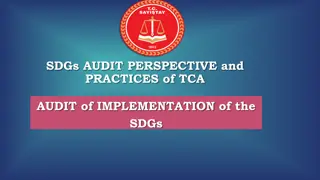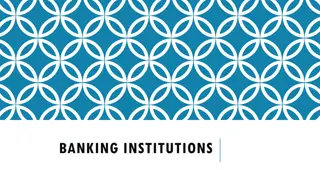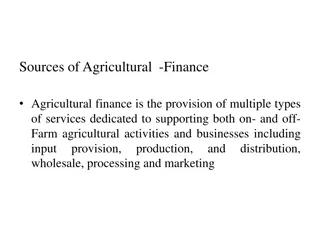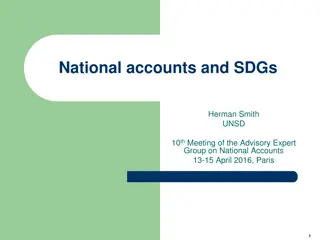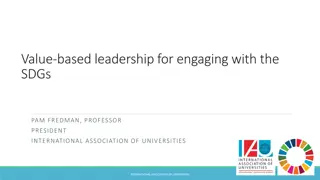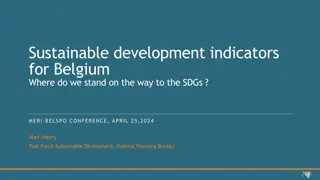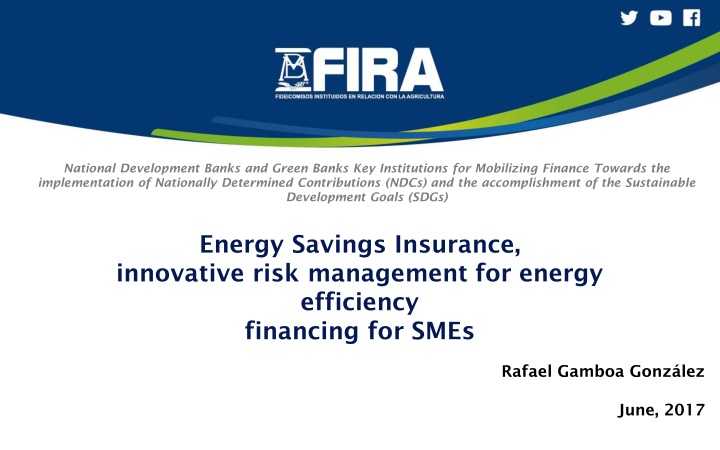
Mobilizing Finance for NDCs and SDGs through Development Banks
Development banks and green banks play a crucial role in financing sustainable projects, such as energy efficiency initiatives for SMEs. FIRA's green finance and energy efficiency program are key examples of driving investment towards achieving NDCs and SDGs. By identifying potential markets, addressing barriers, and offering financial solutions, these institutions are supporting the transition to a greener economy.
Download Presentation

Please find below an Image/Link to download the presentation.
The content on the website is provided AS IS for your information and personal use only. It may not be sold, licensed, or shared on other websites without obtaining consent from the author. If you encounter any issues during the download, it is possible that the publisher has removed the file from their server.
You are allowed to download the files provided on this website for personal or commercial use, subject to the condition that they are used lawfully. All files are the property of their respective owners.
The content on the website is provided AS IS for your information and personal use only. It may not be sold, licensed, or shared on other websites without obtaining consent from the author.
E N D
Presentation Transcript
National Development Banks and Green Banks Key Institutions for Mobilizing Finance Towards the implementation of Nationally Determined Contributions (NDCs) and the accomplishment of the Sustainable Development Goals (SDGs) Energy Savings Insurance, innovative risk management for energy efficiency financing for SMEs Rafael Gamboa Gonz lez June, 2017
FIRA s green finance is composed by sustainable projects Sustainable projects total finance portfolio (credit + guarantees, in million pesos) Nominal growth = 117% FIRA s sustainable projects portfolio $8,914 $8,200 Sustainable tilling production, organic fertilizers) practices (e.g. no $5,782 $7,545 $4,506 techniques, greenhouse $4,100 Efficient irrigation technologies) use of water (e.g. 2013 2014 2015 2016 2017 2018 Project Avance Observ ed Proyecci n ed Structure according to category of the sustainable portfolio Renewable energy, biodigestors) Energy (e.g. solar Biodigestors, 2.1% Forestry, 7.2% Energy efficiency Efficient use of water, 25.8% Sustainable practices, 46.1% Renewable Energy, 13.1% 40% Energy FIRA s double sustainable projects between 2013 and 2018 as a Key Performance Indicator (KPI). Strategic Plan requires to 0% 20% 60% 80% 100% Efficiency, 5.6%
FIRA s energy efficiency program In 2013, FIRA and the Interamerican Development Bank commissioned two studies related to the agroindustry s energy efficiency: of the potential market and of mechanisms to design a Financing Program. The main barrier for EE investments is uncertainty about the achievement of energy savings: Lack of certified providers Validation of EE projects Assure the proper installation and operation of the equipment. In order to minimize uncertainty it is necessary to develop some tools: Legally binding performance contracts Energy savings insurance products To tackle these barriers and develop these tools, FIRA designed its Energy Efficiency Program with support from the IDB, the (CTF) Clean Technology Fund, and, Denmark.
A potential Energy Efficiency (EE) market was identified in FIRA s scope sector. Is the number of Agro industrial enterprises in the country, from which 500 are devoted to vegetable packaging activities. Of production costs. This costs could be as high as: 40% the interviewed enterprises have significant energy Of investments. Of the investment should generate enough energy savings to be repaid in 2 to 5 years. the enterprises expressed interest in making EE enterprises in the study considers that an EE Believes that an EE Project should contribute to generate savings between 20% to 50% Of the enterprises does not know its energy efficiency potential.
Energy efficiency (EE) projects constitute a Win-Win solution that contributes to mitigate greenhouse gases (GHG s) and offers economic benefits, however firms do not invest in them FIRA s EE program tackles the uncertaintes adding financial & non financial instruments 1. Technology provider validated by ANCE. 2. Technology provider Project using methodology. 3. EE Project validated by ANCE. 4. Contract between provider and the agroindustry signed. 5. The surety bond issued in favor of the agroindsutry. 6. Credit granted. 7. EE equipment installed. 8. Installation of EE equipment verified by ANCE. 9. Periodic monitoring of energy savings 10.If necessary, surety unachieved energy savings. designs the an EE Program s 1.Technology provider validated 3.- EE Project validated 7.- EE equipment installed 9.- Energy savings monitored 5.- Surety bond issued the technology 8.- 4.- 10.- Surety bond paid (if required) 2.- EE project designed 6.- Credit granted Equipment installation verified Contract signed bond pays for
Besides enticing agroindustries to take on green investments, FIRA s Green Program implementation has been challenging as it requires incorporating it in our credit process, involving the whole organization Board of Directors based on CEO Defining the strategy towards financing green projects Detecting Agroindustry needs and barriers; establishing identification and measurement Environment Division Negotiating credit lines Financial Office Design the operation of the program Business Development Division Systems capable of identifing and following on projects CIT Identifing clients and explaing and selling credits Field Team Impact Programs Evaluation Division Monitoring & Evaluation
The barriers for a massive implementation of new climate finance solutions have to be considered for a 2nd tier National Development Bank. Different understanding of what is a Green project, which among other things, diminishes the appetite of financers Excessive requirements from donors and international institutions because of multiple objectives (climate change, SMEs, indigenous rights, biodiversity, among others). It would make sense to start incrementally. with a single goal and proceed Even though monitoring is a must for Green projects, the more complex it is, transaction costs increase making these projects less desirable, particularly for SMEs. To involve local financial intermediaries (1sttier), it is crucial to make project identification and measurement part of their credit process. Having environmentally damaging projects is necessary to mobilize the required amounts to finance green projects. a regulatory framework that forbids or increases the costs of
Energy Savings Insurance, innovative risk management for energy efficiency financing for SMEs Rafael Gamboa Gonz lez June, 2017

